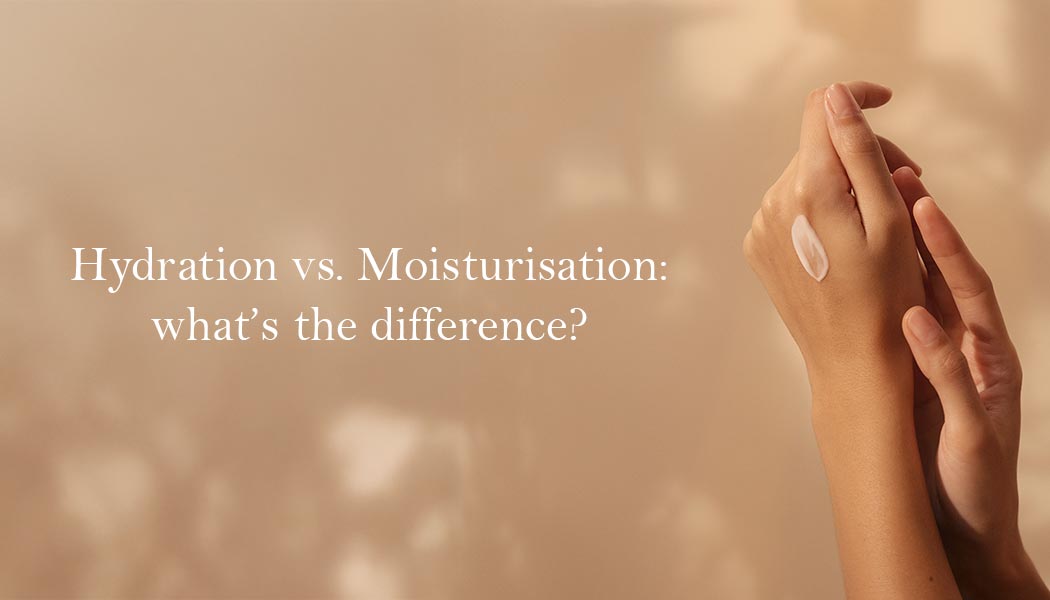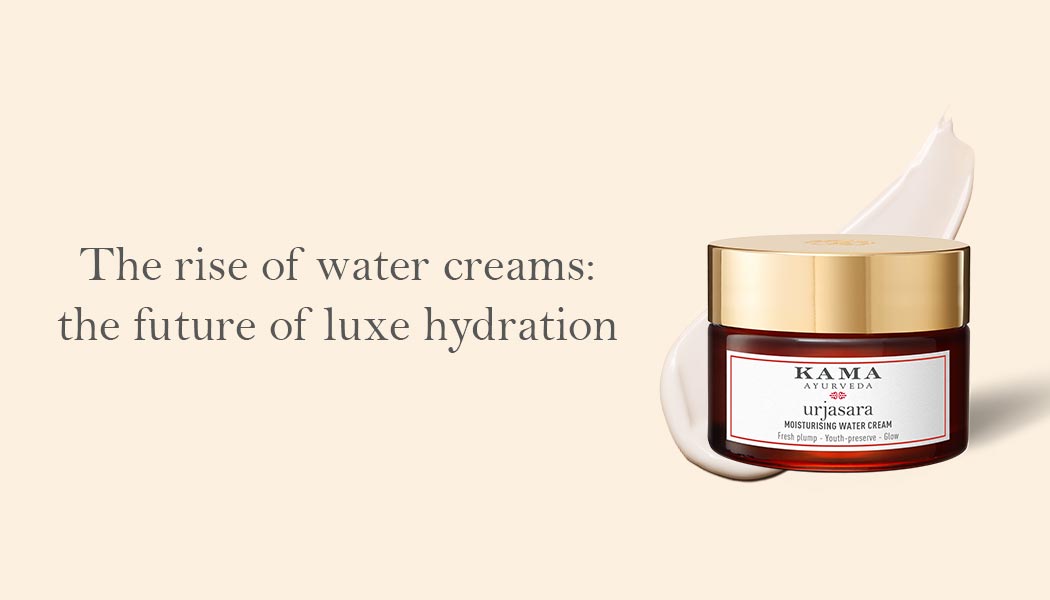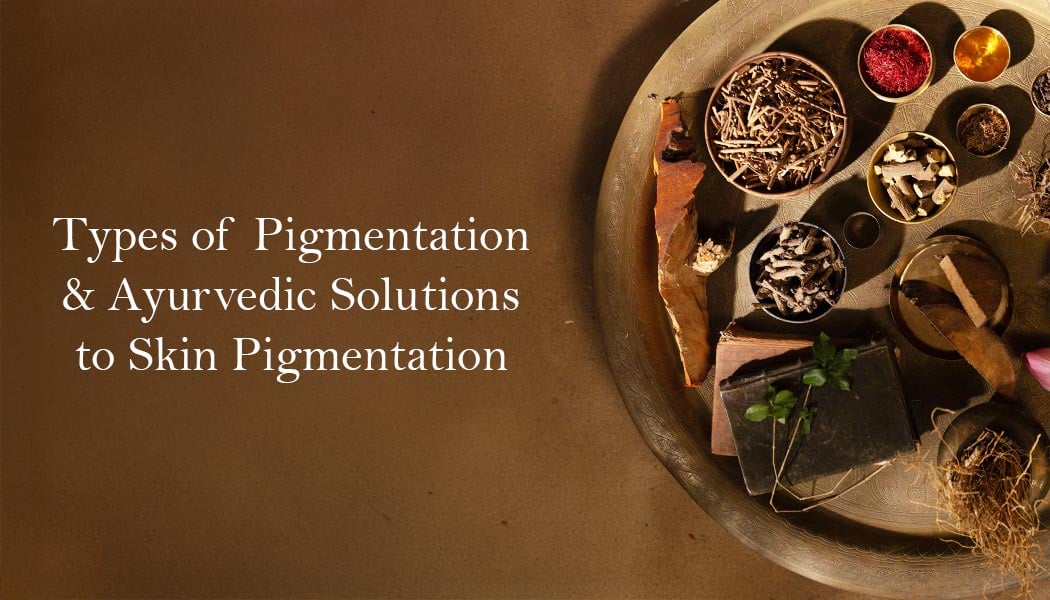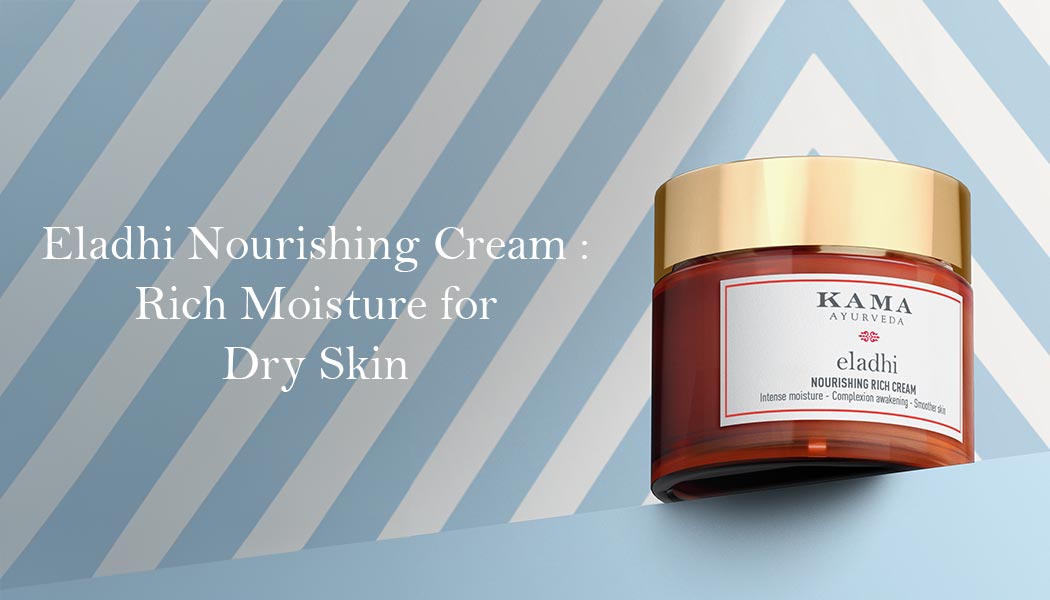- 5 March 2024
- 11 mins read
Did you know that your scalp is always producing a natural oil known as sebum? Without the sufficient production of this oil, your scalp becomes dry and flaky. But on the other hand, excess of this oil also negatively impacts your hair health.
In this post, we'll talk about sebum - its role in maintaining hair health, the negative impact of excess sebum and ways to reduce sebum production on the scalp with the perfect hair care routine.
What Is Sebum?
Sebum is the natural oil produced by the sebaceous glands present in the scalp. This oil is a complex mixture of lipids consisting of glycerides, fatty acids, squalene, and cholesterol.
The amount of sebum produced by your sebaceous glands depends on various factors such as hormones, diet, and genetics. The sebum helps lubricate and protect the hair shaft by traveling up the hair follicle.
Why Is Sebum Important?
Sebum plays a key role in maintaining your scalp and hair health in the following ways -
1. Provides natural conditioning:
Sebum acts as a natural conditioner for hair, providing it with moisture and nourishment. It works as a two-way protective layer that prevents the hair from losing too much moisture but at the same time does not allow excess moisture to enter the hair shaft.
2. Balances pH:
Sebum combined with sweat results in scalp pH that ranges between 4.5 and 6.2. This acidic pH helps prevent scalp from pathogen attacks.
3. UV Protection:
The powerful antioxidant nature of sebum helps to protect the hair and scalp from damage caused by external factors such as pollution, UV rays, and harsh weather conditions.
4. Lubrication:
Sebum lubricates the hair shaft, preventing it from becoming dry and brittle. This helps to prevent breakage and split ends caused by hair friction.
5. Antibacterial and antifungal properties:
The triglycerides present in sebum result in antimicrobial properties that help to protect the scalp from bacterial and fungal infections
6. Reduces frizz:
When there is not enough sebum in hair, the cuticle opens and allows the moisture to escape resulting in frizziness. Sebum helps to reduce frizz, leaving hair looking smooth and manageable.
7. Helps in wound healing:
By warding off pathogens and regulating moisture on the scalp, sebum helps in wound healing.
Why Is Sebum Buildup Bad For Your Hair Health?
While sebum is important for keeping your scalp and hair moisturized and healthy, an excess buildup of sebum can cause various issues for your scalp health.
Firstly, when sebum accumulates on the scalp, it mixes with dead skin cells, dirt, and other pollutants, resulting in clogged hair follicles.
As a result, the nutrition supply from the blood to your hair follicles gets blocked, eventually leading to hair loss.
Secondly, sebum buildup also creates a breeding ground for bacteria and fungi, leading to scalp infections such as folliculitis and dandruff.
An excess buildup of sebum can lead to the overgrowth of the yeast that naturally lives on the scalp. This dandruff-causing microbe known as Malassezia globosa is one organism that thrives in sebum and causes an itchy, flaky, and inflamed scalp condition known as seborrheic dermatitis.
Lastly, an accumulation of sebum on the scalp also makes hair look greasy and dirty, making it difficult to manage and style.
Therefore, it is important to maintain a healthy balance of sebum production on the scalp and keep it clean to prevent the negative effects of sebum buildup.
How to Reduce Sebum Production on Scalp?
Are you tired of feeling like you need to wash your hair every day, only to find it still greasy the next morning? Well, don't worry, you're not alone! Many of us struggle with excess sebum production on our scalp, leading to oily hair and frustration.
Thankfully, there are ways to manage excessive sebum production on the scalp. And most of them are easy to follow -
1. Regular Shampooing
When you don't wash your hair regularly, the natural oils and sweat produced by your scalp build up. Shampooing your hair regularly protects your hair follicles from getting clogged by excess sweat, dirt, and oil.
It also prevents overgrowth of micro-organisms that could increase sebum production. However, remember to wash your hair only with lukewarm water to prevent scalp dryness.
We recommend Kama Ayurveda’s Bringadi Hair Cleanser to wash your hair regularly without causing any damage. This natural cleanser nourishes, repairs, and adds volume to your hair with natural ingredients such as Amla and Bhringraj.
2. Using Mild, Natural Hair Care
Harsh shampoos have chemicals such as sulfates that disrupt the natural barrier function of the scalp. This leads to dryness that triggers an overproduction of sebum. Natural shampoos and conditioners contain ingredients such as Tea Tree oil, Amla, Coconut Milk or Aloe vera, which help soothe the scalp and reduce excessive sebum production.
We recommend Kama Ayurveda’s Bringadi Hair Conditioner to mitigate damage caused by heat, chemical treatments and environmental factors.
3. Eating A Balanced Diet
A diet high in fruits, vegetables, whole grains, and lean protein help regulate insulin and androgen hormones, which contribute to an overproduction of sebum. Eating a balanced diet also helps maintain a healthy gut microbiome, which has been linked to skin health and sebum regulation.
Additionally, a balanced diet provides antioxidants and anti-inflammatory compounds that help prevent oxidative stress and inflammation. This maintains the skin's barrier function and avoids triggering sebaceous gland activity.
4. Managing Stress
Chronic stress can also lead to inflammation and oxidative stress, which further disrupts the skin's barrier function and triggers sebum overproduction. Managing stress through techniques such as mindfulness, exercise, or meditation helps regulate the HPA (hypothalamic-pituitary-adrenal) axis and prevent an overproduction of androgen hormones.
5. Using Lemongrass Essential Oil
Incorporating lemongrass essential oil into hair care routines through shampoos or hair masks may help regulate sebum production and promote a healthy scalp.
The oil's antimicrobial properties help prevent the growth of bacteria and fungi on the scalp, which contributes to inflammation and sebaceous gland activity. In addition, lemongrass essential oil has anti-inflammatory properties that help soothe the scalp and reduce inflammation, thereby reducing excess sebum production.
Read - 12 Beauty and Health Benefits Of Lemongrass Essential Oil
6. Ayurvedic Hair Masks
Ayurvedic hair masks use ingredients Amla, Shikakai, and Hibiscus, which have natural astringent properties that help regulate oil production and reduce buildup on the scalp.
Additionally, many Ayurvedic hair masks contain natural oils such as coconut or sesame oil, that moisturize the scalp and prevent dryness that can trigger an overproduction of sebum. Regular use of Ayurvedic hair masks helps balance the scalp's oil production, reduce inflammation, and promote overall scalp and hair health.
We recommend Bringadi Intensive Repair Post Wash Hair Mask, a fuss-free spa with powerful Ayurvedic ingredients like Bhringraj (King Of Herbs), Coconut Milk (natural conditioner) and Amla (a powerhouse of Vitamin C) that adds resilience to hair.
Update, put 3 ways or shelf talker
7. Brush Your Hair Regularly
Regular brushing helps to distribute the sebum along the length of your hair, preventing it from building up on your scalp. It also helps to stimulate the blood flow to your scalp, which encourages the production of healthy hair follicles and prevents hair loss. This results in healthy hair growth.
Moreover, brushing also helps to exfoliate your scalp, removing dead skin cells and other debris that clogs your hair follicles and lead to sebum buildup.
8. Avoid Overwashing
When you wash your hair too frequently, you strip away the natural oils produced by your scalp, which causes your scalp to overproduce sebum in an attempt to compensate for the dryness. This can lead to an oily scalp and greasy hair.
Moreover, excessive washing also damages your hair and scalp, resulting in dryness, breakage, and irritation. This further disrupts the natural balance of sebum production.
To manage sebum production, it is important to find the right balance of washing and caring for your hair. For most people, washing their hair 2-3 times a week is sufficient to keep their hair and scalp clean and healthy without stripping the natural oils.
Read - How Often To Wash Hair? – Expert Advice
9. Apple Cider Vinegar Rinse
Apple cider vinegar is acidic, and when diluted with water and used as a rinse, it helps to restore your scalp's natural pH balance. This reduces the overproduction of sebum and helps in managing oily hair.
Additionally, Apple Cider Vinegar has antimicrobial properties that help in eliminating bacteria and fungi on your scalp.
10. Using Tea Tree Essential Oil
Tea tree oil is known to have astringent properties that help to tighten the pores on your scalp, which helps reduce the production of sebum. It also helps to eliminate bacteria and fungi on your scalp, thus preventing scalp issues like dandruff that can lead to excess sebum production.
Read - How To Use Tea Tree Oil For Hair Growth: Benefits and Uses
Causes Of Excess Sebum Production On Scalp
We all know that feeling when we wash our hair in the morning, but by lunchtime, it already looks greasy and oily, like we haven't washed it in a week! Yikes! So, what's causing this problem? Is it just our genetics, or are there other factors at play here? Let's dive in and explore the causes of excess sebum production on the scalp.
Genetics
Variations in genes that regulate sebum production, as well as genes that affect androgen activity, can contribute to excess sebum production on the scalp.
Hormones
Androgens, such as testosterone, stimulate sebum production, and hormonal changes during puberty, menstruation, pregnancy, and menopause can lead to fluctuations in androgen levels, resulting in increased sebum production.
Environmental factors
High humidity can cause the scalp to produce more sebum, while pollution and chemicals can irritate the scalp and trigger the sebaceous glands to produce more sebum as a protective response.
Poor scalp hygiene
Poor scalp hygiene can lead to excess sebum production by causing a buildup of dirt, oils, and dead skin cells. This buildup clogs hair follicles and disrupts the balance of the scalp microbiome, leading to inflammation and an overproduction of sebum.
Digestive issues
Digestive issues can cause excess sebum production due to the gut-skin axis (the two-way relationship between the gut microbiome and skin health). Poor gut health leads to an imbalance of gut microbiota, causing inflammation and oxidative stress. This triggers hormonal changes that stimulate sebaceous gland activity, leading to excess sebum production.
Metabolic disorders
Metabolic disorders such as diabetes or insulin resistance can cause excess sebum production by altering hormonal balance. These conditions lead to an increase in androgen hormones, which stimulate the sebaceous glands to produce more sebum.
In addition, metabolic disorders may cause inflammation and oxidative stress, leading to a disruption in the skin's barrier function and an overproduction of sebum.
Improper diet
An improper diet, high in refined carbohydrates and saturated fats, can cause excess sebum production. Foods with a high glycemic index, such as white bread and white rice, may also disrupt the overall metabolism.
Micro-organisms
The microorganisms on the scalp play a crucial role in maintaining a healthy balance of the scalp microbiome. However, an imbalance of these microorganisms, such as an overgrowth of Propionibacterium acnes, can trigger inflammation and stimulate sebaceous gland activity, leading to excess sebum production.
Buildup of hair products
The buildup of hair products on the scalp lead to excess sebum production by clogging hair follicles and disrupting the natural balance of the scalp microbiome. This buildup creates an environment where bacteria and fungi thrive, leading to inflammation and sebaceous gland activity.
Additionally, some hair products contain ingredients that irritate the scalp, leading to an excessive sebum production in response to the inflammation.
Read - What Causes Scalp Buildup and How Can I Treat It?
How To Clean Sebum Plugs From The Scalp?
Sebum plugs are small, waxy deposits that can form on the scalp when the natural oils produced by your scalp mix with dead skin cells, dirt, and other impurities. They are referred to as "scalp acne" or "follicular keratosis."
Sebum plugs clog hair follicles, leading to a variety of issues such as hair loss, scalp irritation, and dandruff. They also make it difficult for hair products to penetrate the hair shaft, leading to less effective results from your hair care routine.
Here are a few ways to clean sebum plugs -
- Use a clarifying shampoo: Clarifying shampoos are designed to deep-clean your hair and scalp, removing buildup and impurities. Look for a clarifying shampoo that contains salicylic acid, which helps to break down sebum plugs.
- Exfoliate your scalp: Just like exfoliating your skin helps remove dead skin cells and unclog pores, exfoliating your scalp can help to remove sebum plugs. You can use a gentle scalp scrub or a soft-bristled brush to exfoliate your scalp before shampooing.
- Try a scalp mask: There are many scalp masks available that help to detoxify and clarify your scalp, removing sebum plugs and other impurities. Look for a mask that contains ingredients like tea tree oil, clay, or activated charcoal.
- Use a steam treatment: Steaming your scalp helps to loosen and dissolve sebum plugs, making them easier to remove. You can use a facial steamer or simply soak a towel in hot water and wrap it around your head for a few minutes.
- Consult with a dermatologist: If you're struggling with persistent sebum plugs or other scalp issues, it may be a good idea to consult with a dermatologist. They can help to diagnose the underlying cause of your scalp problems and recommend treatments or medications that may help.
Remember that while it's important to clean sebum plugs from your scalp, it's also important to take steps to prevent them from forming in the first place.
Can Excess Sebum Buildup Cause Hair Loss?
Yes, excess sebum production on the scalp can lead to hair loss or thinning hair. When the hair follicles become clogged with sebum, it can cause a condition called follicular occlusion, which can lead to inflammation and damage to the hair follicles. This damage can result in hair thinning, hair loss, and even bald patches in some cases.
Excess sebum production can also contribute to the growth of bacteria and fungi on the scalp, which can further damage the hair follicles and lead to hair loss.We recommend Kama Ayurveda Bringadi Intensive Hair Treatment Oil for the best hair and scalp care. It is a multitasker Ayurvedic oil for hair loss, premature graying, and dandruff that restores damaged hair follicles back to life.
If you're experiencing hair loss or thinning hair, it's important to talk to your healthcare provider or a dermatologist. They can help to diagnose the underlying cause of your hair loss and recommend treatments or lifestyle changes that may help to restore hair growth and prevent further damage to the hair follicles.
Ayurveda Recommended Diet To Reduce Sebum Production
Here are some recommended Ayurvedic dietary guidelines that may help to manage excess sebum production on the scalp:
- Eat a diet rich in fresh, whole foods: Focus on eating a variety of fresh, whole foods such as fruits, vegetables, whole grains, nuts, seeds, and legumes. These foods are high in nutrients, fiber, and antioxidants, which help to support healthy skin and hair.
- Avoid processed and fried foods: Processed and fried foods are often high in unhealthy fats and sugars, which contribute to excess sebum production on the scalp. Try to avoid these foods as much as possible and opt for healthier cooking methods such as steaming, baking, or sautéing with healthy oils.
- Include anti-inflammatory foods: Foods that are high in anti-inflammatory compounds help to reduce inflammation in the body and on the scalp. Some examples include turmeric, ginger, garlic, and leafy green vegetables.
- Stay hydrated: Drinking plenty of water throughout the day helps to flush toxins from the body and keep your skin and hair hydrated and healthy.
- Practice mindful eating: Ayurveda emphasizes the importance of mindful eating, which means eating slowly, chewing your food thoroughly, and paying attention to how your body feels before, during, and after eating.
Remember that everyone's dietary needs are different, so it's important to work with a qualified Ayurvedic practitioner or healthcare provider to develop a personalized diet plan that meets your individual needs and goals.
Shreya Dalela is a certified Yoga instructor and a professional dancer trained at The Danceworx. She’s passionate about Ayurveda and holistic living with over 6 years of experience in doing extensive research and content creation in the domain.

Certified Ayurvedic Doctor (Central Council of Indian Medicine) working in Kama Ayurveda as an Assistant Training Manager.
- What Is Sebum?
- Why Is Sebum Important?
- Why Is Sebum Buildup Bad For Your Hair Health?
- How to Reduce Sebum Production on Scalp?
- Update, put 3 ways or shelf talker
- Causes Of Excess Sebum Production On Scalp
- How To Clean Sebum Plugs From The Scalp?
- Can Excess Sebum Buildup Cause Hair Loss?
- Ayurveda Recommended Diet To Reduce Sebum Production




















